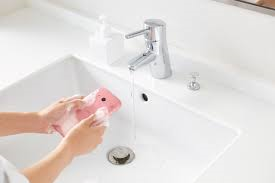
Breaking News
 When flipping margins fall below 25%, risk doesn't disappear.
When flipping margins fall below 25%, risk doesn't disappear.
 Weird, I Thought They Could Only Redact The Victims - Clip
Weird, I Thought They Could Only Redact The Victims - Clip
 Lucid: Drone Flyover Shows Record 27 Car Haulers at Arizona Factory
Lucid: Drone Flyover Shows Record 27 Car Haulers at Arizona Factory
 The Food Math Nobody Does (But Should)
The Food Math Nobody Does (But Should)
Top Tech News
 EngineAI T800: Born to Disrupt! #EngineAI #robotics #newtechnology #newproduct
EngineAI T800: Born to Disrupt! #EngineAI #robotics #newtechnology #newproduct
 This Silicon Anode Breakthrough Could Mark A Turning Point For EV Batteries [Update]
This Silicon Anode Breakthrough Could Mark A Turning Point For EV Batteries [Update]
 Travel gadget promises to dry and iron your clothes – totally hands-free
Travel gadget promises to dry and iron your clothes – totally hands-free
 Perfect Aircrete, Kitchen Ingredients.
Perfect Aircrete, Kitchen Ingredients.
 Futuristic pixel-raising display lets you feel what's onscreen
Futuristic pixel-raising display lets you feel what's onscreen
 Cutting-Edge Facility Generates Pure Water and Hydrogen Fuel from Seawater for Mere Pennies
Cutting-Edge Facility Generates Pure Water and Hydrogen Fuel from Seawater for Mere Pennies
 This tiny dev board is packed with features for ambitious makers
This tiny dev board is packed with features for ambitious makers
 Scientists Discover Gel to Regrow Tooth Enamel
Scientists Discover Gel to Regrow Tooth Enamel
 Vitamin C and Dandelion Root Killing Cancer Cells -- as Former CDC Director Calls for COVID-19...
Vitamin C and Dandelion Root Killing Cancer Cells -- as Former CDC Director Calls for COVID-19...
 Galactic Brain: US firm plans space-based data centers, power grid to challenge China
Galactic Brain: US firm plans space-based data centers, power grid to challenge China
Inexpensive new solar still ups water purification efficiency

These devices absorb heat from sunlight and use it to evaporate water, leaving behind contaminants and reforming as a liquid in a separate container, and although they work, they can be relatively expensive and inefficient. Researchers have now developed a new type of solar still using carbon-coated paper that they say is cheaper and more than twice as efficient as existing devices.
Solar stills can be live-saving devices for people in developing countries or disaster-affected areas, but there's room for improvement according to the team made up of members from the University at Buffalo (UB), China's Fudan University and the University of Wisconsin-Madison.
"People lacking adequate drinking water have employed solar stills for years, however, these devices are inefficient," says Haomin Song, a co-author of the study. "For example, many devices lose valuable heat energy due to heating the bulk liquid during the evaporation process. Meanwhile, systems that require optical concentrators, such as mirrors and lenses, to concentrate the sunlight are costly."



